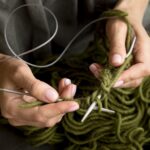In a world increasingly conscious of sustainability, Woolrec has emerged as a revolutionary concept in the textile industry. Woolrec focuses on the recycling, regeneration, and responsible reuse of wool fibers that would otherwise end up as waste. By combining technology, craftsmanship, and sustainability, Woolrec offers an innovative approach to how we view clothing and fabric waste.
This article explores what Woolrec is, how it works, and why it’s becoming an essential part of the modern eco-friendly textile movement.
The Concept Behind Woolrec
At its core, Woolrec stands for “Wool Recycling.” It represents a system dedicated to collecting, sorting, and reprocessing discarded wool garments into new, usable fibers. Unlike synthetic fabrics, wool is 100% natural and biodegradable. However, its production consumes resources like water and energy. Woolrec addresses this challenge by extending wool’s life cycle, reducing waste, and cutting down environmental impact.
The idea of Woolrec is simple but powerful — to transform post-consumer wool waste into high-quality regenerated yarns. These yarns can be used to produce garments, upholstery, and accessories with a smaller carbon footprint.
How Woolrec Works
The Woolrec process combines traditional wool-handling methods with modern recycling technologies. Below is a simplified overview of how Woolrec operates:
| Stage | Process Description | Environmental Benefit |
|---|---|---|
| Collection | Gathering used wool textiles from consumers or industries. | Reduces landfill waste and promotes circular fashion. |
| Sorting | Separating wool by color, texture, and quality. | Minimizes the need for chemical dyes. |
| Shredding | Breaking down wool fabrics into fibers. | Saves natural resources by reusing existing materials. |
| Spinning | Regenerating fibers into new yarn. | Produces sustainable materials for the textile market. |
| Manufacturing | Creating new products from recycled yarn. | Encourages eco-friendly production cycles. |
Each stage of the Woolrec system is designed to ensure maximum resource efficiency and minimal environmental harm.
The Importance of Woolrec in Sustainable Fashion
Sustainability has become more than a trend—it’s a necessity. The textile industry is one of the largest contributors to global pollution, and wool, while natural, still has a significant production footprint. Woolrec offers a way to counter this by embracing the circular economy model.
Through Woolrec, fashion brands can reduce their dependence on virgin wool, which requires sheep farming, land, and water. Instead, they can adopt regenerated wool fibers that are equally durable and comfortable. This process saves energy and significantly lowers carbon emissions.
Moreover, consumers are becoming increasingly aware of eco-friendly practices. By supporting -based products, they contribute to an ethical and environmentally responsible fashion industry.
Technological Innovations in Woolrec
Modern recycling techniques have taken Woolrec to new heights. Artificial intelligence and automated sorting systems help classify fibers with remarkable precision. Additionally, advancements in mechanical recycling ensure the wool’s softness and durability remain intact after regeneration.
A key innovation in is the fiber recovery technology, which preserves the wool’s natural crimp and texture. This enables manufacturers to create garments that look and feel just like those made from virgin wool—without harming the environment.
Woolrec and the Circular Economy
One of the defining aspects of Woolrec is its contribution to the circular economy. In this model, products are designed, produced, and consumed in a way that maximizes reuse and minimizes waste. plays a crucial role by keeping valuable wool fibers within the production loop.
The Woorec process ensures that instead of disposing of old wool garments, they are transformed into new ones—closing the loop between consumption and production. This approach promotes longevity, responsibility, and innovation across the fashion and textile sectors.
Environmental and Economic Benefits of Woolrec
Woolrec delivers both ecological and financial benefits, making it a win-win for producers, consumers, and the planet.
| Benefit Type | Description |
|---|---|
| Environmental | Reduces textile waste and carbon emissions by reusing existing materials. |
| Economic | Lowers production costs by minimizing the need for virgin wool. |
| Social | Promotes responsible consumer behavior and sustainable fashion awareness. |
| Resource Conservation | Saves water, energy, and land resources otherwise used in sheep farming. |
By integrating into their production lines, fashion brands can not only improve sustainability but also attract eco-conscious consumers looking for ethical choices.
The Role of Woolrec in Reducing Textile Waste
Globally, millions of tons of textile waste are discarded each year, with only a small percentage recycled. aims to change this statistic by offering a structured and efficient recycling framework.
Through initiatives, textile companies can establish collection points where consumers return old garments. These are then processed, sorted, and recycled into new fibers. This cycle prevents textiles from ending up in landfills and ensures a continuous flow of reusable material.
Moreover, aligns perfectly with the United Nations’ Sustainable Development Goals (SDGs), particularly those focused on responsible production and climate action.
Woolrec in Fashion and Interior Design
Woolrec’s versatility extends beyond clothing. The recycled wool fibers produced through this system are also being used in interior design, automotive textiles, and home furnishings.
| Application | Woolrec Usage |
|---|---|
| Fashion Apparel | Sweaters, coats, scarves, and knitwear. |
| Home Textiles | Carpets, curtains, upholstery fabrics. |
| Automotive Industry | Eco-friendly seat covers and insulation. |
These applications highlight how has evolved from a recycling initiative into a multi-industry innovation platform.
Future of Woolrec: Towards a Greener Textile Industry
The future of Woolrec looks promising. As more companies commit to sustainable production, demand for recycled fibers continues to rise. With ongoing research and development, is expected to introduce even more efficient recycling systems and better-quality regenerated yarns.
In addition, collaborations between textile producers, sustainability organizations, and governments are driving global awareness of wool recycling. The aim is to make a mainstream part of textile production worldwide, replacing traditional wasteful practices.
Challenges Facing Woolrec
Despite its many benefits, Woolrec also faces some challenges. One of the main hurdles is the high cost of processing recycled wool compared to synthetic fibers. Additionally, not all wool garments are suitable for recycling due to blends with other materials like polyester or nylon.
However, innovation continues to bridge these gaps. New technologies are emerging that can separate mixed fibers efficiently, making the process more accessible and cost-effective.
Conclusion
Woolrec is more than just a recycling initiative—it’s a movement toward a cleaner, greener, and more sustainable textile industry. By turning discarded wool into high-quality regenerated fibers, Wolrec reduces waste, conserves resources, and promotes eco-conscious living.
As consumers and brands embrace sustainability, stands as a symbol of innovation and responsibility in fashion. Its combination of technology, ethics, and creativity ensures that wool recycling isn’t just a possibility—it’s the future.
Through the adoption of , the textile world can truly spin a new story—one where sustainability, style, and substance coexist harmoniously.






